Einleitung
Interne Voraussetzung
-
-
Entferne folgende drei Torx Schrauben:
-
Eine 5,0 mm T8 oder 2 mm Inbus Schraube
-
Eine 16,2 mm T6 Schraube
-
Eine 26 mm T6 Abstandsschraube
-
-
-
Ziehe sorgfältig an den Drähten der beiden Thermosensorkabels an der Festplatte, um ihre Stecker aus den jeweiligen Sockeln auf dem Logic Board zu lösen.
-
-
-
Löse die Verbinder von Festplatte und optischem Laufwerk mit dem flachen Ende des Spudgers aus ihren Sockel auf dem Logic Board.
-
-
-
Setze das Mac Mini Logic Board Removal Tool in die beiden rot markierten Löcher ein. Schiebe es durch, bis es das äußere Gehäuse unter dem Logic Board berührt, das ist wichtig, bevor du weitermachst.
-
Ziehe das Werkzeug vorsichtig in Richtung der I/O Platine. Diese Platine und das Logic Board sollten etwas aus dem äußeren Gehäuse rutschen.
-
Höre auf zu hebeln, sobald die I/O Platine sichtbar vom Gehäuse getrennt ist. Entferne das Removal Tool.
-
-
-
Drücke gleichzeitig die zwei Plastikrasten ganz rechts und links am I/O Board in Richtung Mitte und ziehe das I/O Board etwas vom äußeren Gehäuse weg.
-
-
-
Hebe die Festplatte am Rand gleich am Logic Board hoch und entferne sie vom Mini. Achte dabei auf den RAM Sockel und darauf, dass sich keine Kabel verfangen.
-
Um dein Gerät wieder zusammenzusetzen, folge den Schritten in umgekehrter Reihenfolge.
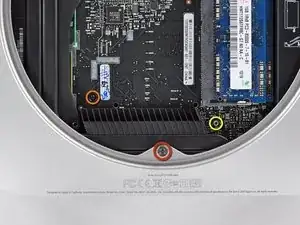
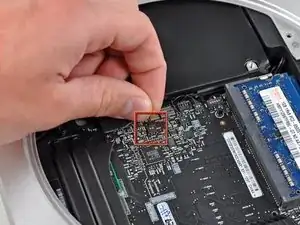
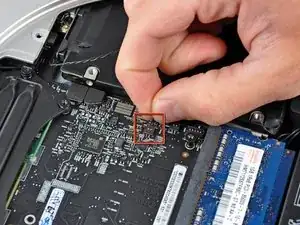
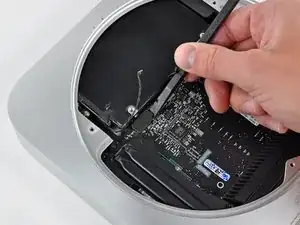
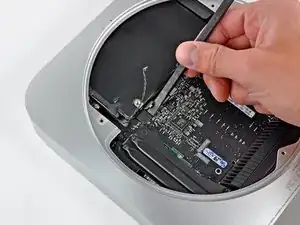
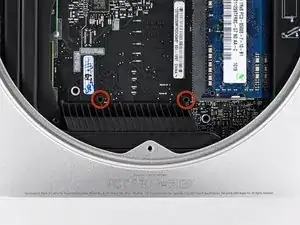
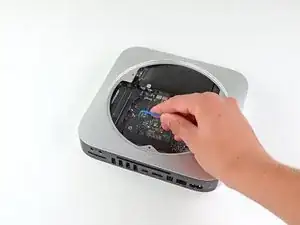
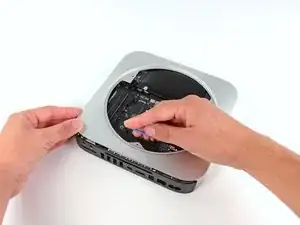
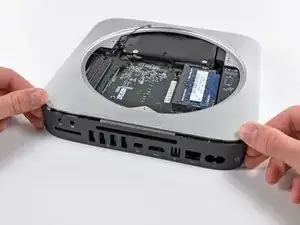
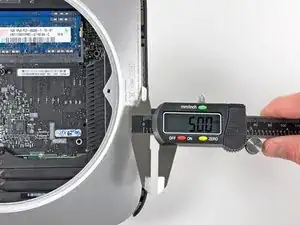
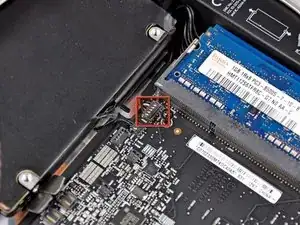
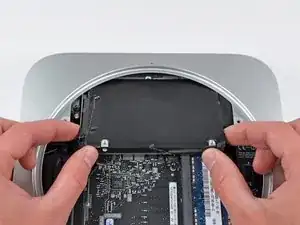
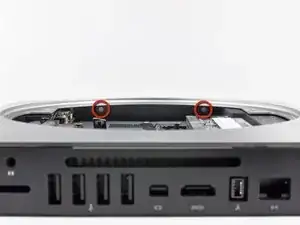

On mine I needed to remove the 26 mm T6 Torx standoff during step 3
philipashlock -